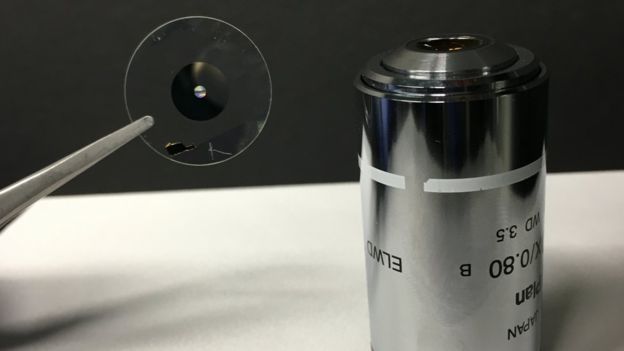
Researchers have engineered the world's first planar metalens exceeding the capabilities of today's bulkier cousins.
Engineers have developed an alternative to the ponderous lenses used in telescopes, microscopes, smartphones, cameras, and other devices: a novel ultra-thin planar lens or “metalens.” Currently, there aren’t any commercially available lenses that can replace the standard stacked lens option with a singular compact thin substitute.
The lenses used today are curved and are stacked on top of each other to correct image distortions and present a clear image without corruptions accounting for the long telephoto lenses and their large microscope contemporaries, according to a Tech Times report.
Researchers associated with Harvard John A. Paulson School of Engineering and Applied Sciences (SEAS) created the first planar lens, which is optimized for light’s complete color spectrum. And it has the ability to resolve nanoscale features. A thin construction of tiny waveguides called “metasurface” bends the light that passes through the lens, resembling the curved component of lenses today.
To create the lens, they used titanium dioxide at its core, comprising the high-aspect-ratio nanostructures. Essentially, the metalens has a more advanced focusing capability than today’s curved counterparts. In fact, the lens is being hailed as a revolutionary product with the power to operate within light’s visible spectrum hinting that it could be a permanent substitute for current lenses.
“In the near future, metalenses will be manufactured on a large scale at a small fraction of the cost of conventional lenses, using the foundries that mass produce microprocessors and memory chips,” said Federico Capasso, a Robert L. Wallace professor of Applied Physics.
Study participants already filed patents for the novel metalens and are pursuing commercial opportunities to further the world’s first planar lenses. Capasso added, “But our lenses, being planar, can be fabricated in the same foundries that make computer chips. So all of a sudden the factories that make integrated circuits can make our lenses.”
The research was originally published in the June 3rd edition of the journal Science.
Image credit: Federico Capasso

Leave a Reply